Click here to visit Original posting
In this face-off, we'll be comparing the Dyson V11 and the V15 Detect, so you can figure out which is right for your needs. These are amongst the best cordless vacuums on the market, but there are differences that mean one will likely be a better fit than the other, depending on your specific priorities.
The V11 is the older of the two vacuums, having launched in 2019. It has a suction-maximizing, in-line design, helpful LCD screen, and a floorhead that can tell whether its on hard floor or carpet and adjust power accordingly. You can read all about it in our Dyson V11 review, or see how it improved on its predecessor in our Dyson V10 vs V11 comparison.
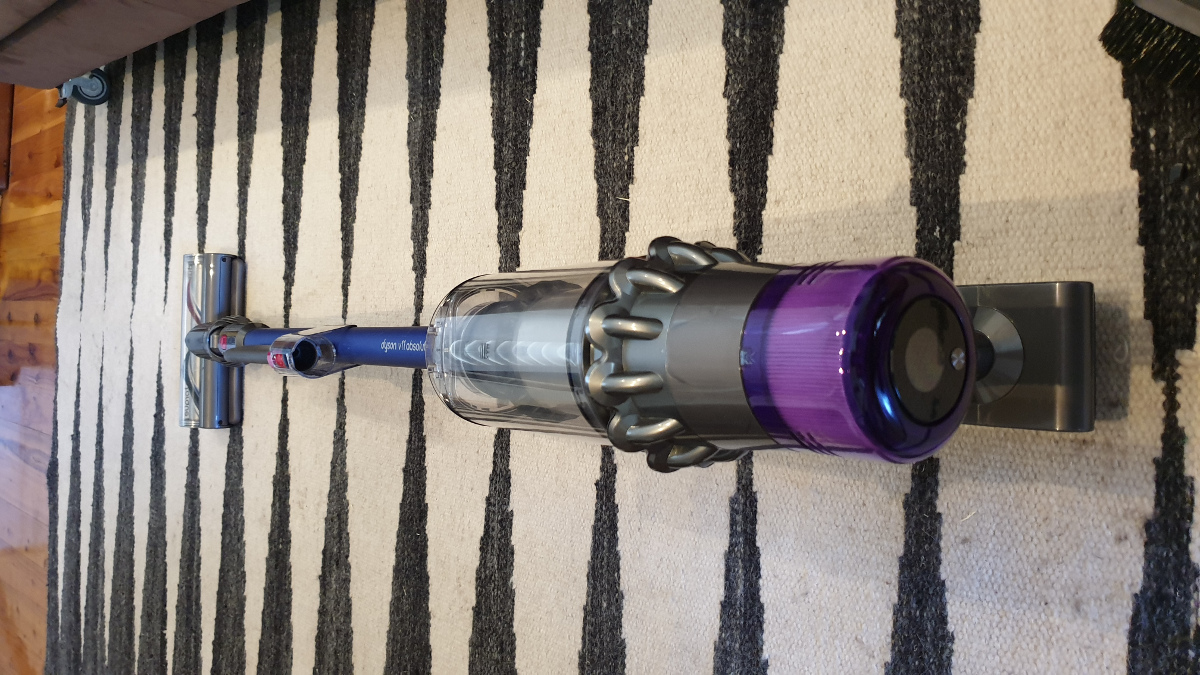
The V15 joined the lineup in 2021, as the successor to the V11. It does all those things we just mentioned, but also provides real-time reports of exactly what it's sucking up at any time, can adjust suction automatically based on dust levels (as well as floor type), and has a dirt-illuminating laser built into its second floorhead. Get the full low-down in our Dyson V15 Detect review, or see how it compares to its successor in our Dyson V15 vs Gen5detect face-off.

The V15 was actually unveiled alongside the V12 Detect Slim, but that is not considered a flagship model, and was very much a secondary focus at the launch event. The Dyson V15s Detect Submarine joined the range in 2023, with the capacity to mop as well as well as suck. That model is sufficiently different that we won't be discussing it in this head-to-head.
Finding a winner between the V15 and V11 is tricky. Strictly speaking, the V15 is the better of the two vacuums, winning in both the Performance and Design sections of this versus. However, both wins are marginal – the design of the two is actually very similar, and most of the differences are in terms of added features, which are all pretty cool but not strictly necessary for most people. Add in the fact that the V11 is significantly cheaper, and it makes it a far stronger prospect. For that reason, we actually rate the V11 as the best Dyson vacuum for most people, because it hits the sweet spot in terms of price and performance.
That's the short version – let's look a little closer at how the Dyson V11 vs V15 Detect compare.
Dyson V11 vs V15: price & value for money
As with all Dyson vacuums, there are a few iterations, with things like 'Absolute' and 'Extra' added to the name. Generally, this just means there's a different selection of tools included, and the base model is the same. It can make comparing prices tricky, so here we'll just focus on what's available direct from Dyson at time of writing.
US
For shoppers in the US, there's the standard a standard Dyson V11 with a list price of $569.99, and a V11 Extra (with added tools) for $599.99. There's also a regular V15 Detect for $749.99, or a V15 Detect Absolute also for $749.99. These look like the same thing in a different colorway.
UK
In the UK you can get a V11 Advanced at a list price of £429.99, or the V15 Detect Absolute at £649.99.
Australia
In Australia, there's just the V11 Advanced, listed at AU$1,199, or the V15 Detect Absolute for AU$1,449.
Based on list prices, both vacuums fall into TechRadar's premium price bracket. The V15 also generally represents a significantly bigger investment than the V11, whichever iteration you go for. (For reference, the successor to the V15, 2022's Gen5detect, is priced from $949.99 / £769.99 / AU$1,549.)
Both are great quality products that have been meticulously designed, and the special features you get with the V15 will make it worth the extra outlay for some. However, the V11 is probably more realistic for most people. We do see Dyson deals cropping up semi-regularly, so you may be able to dodge paying full price. Shopping events like the Black Friday sales can be an especially good time to shop for a bargain.
- Winner: Dyson V11
Dyson V11 vs V15: design
From the outside, the V11 and V15 look pretty similar. Both have filter, cyclone array, dust cup and wand in the suction-efficient, in-line configuration introduced in the Dyson V10. Both also use a 1-inch / 2.5cm LCD screen to provide useful information, like which suction mode you're using and how much cleaning time you have left in that mode. This screen was a new addition on the V11.
In terms of dimensions the two are basically identical, the bin volume is the same (0.2 gallon / 0.77L) and both have 14 cyclones and a swappable battery. The filtration system seems to be the same too: a fully sealed system capable of capturing 99.99% of particles as small as 0.3 microns. The newer model is marginally heavier, but there's not much in it – 3kg for the V11 versus 3.1kg for the V15.
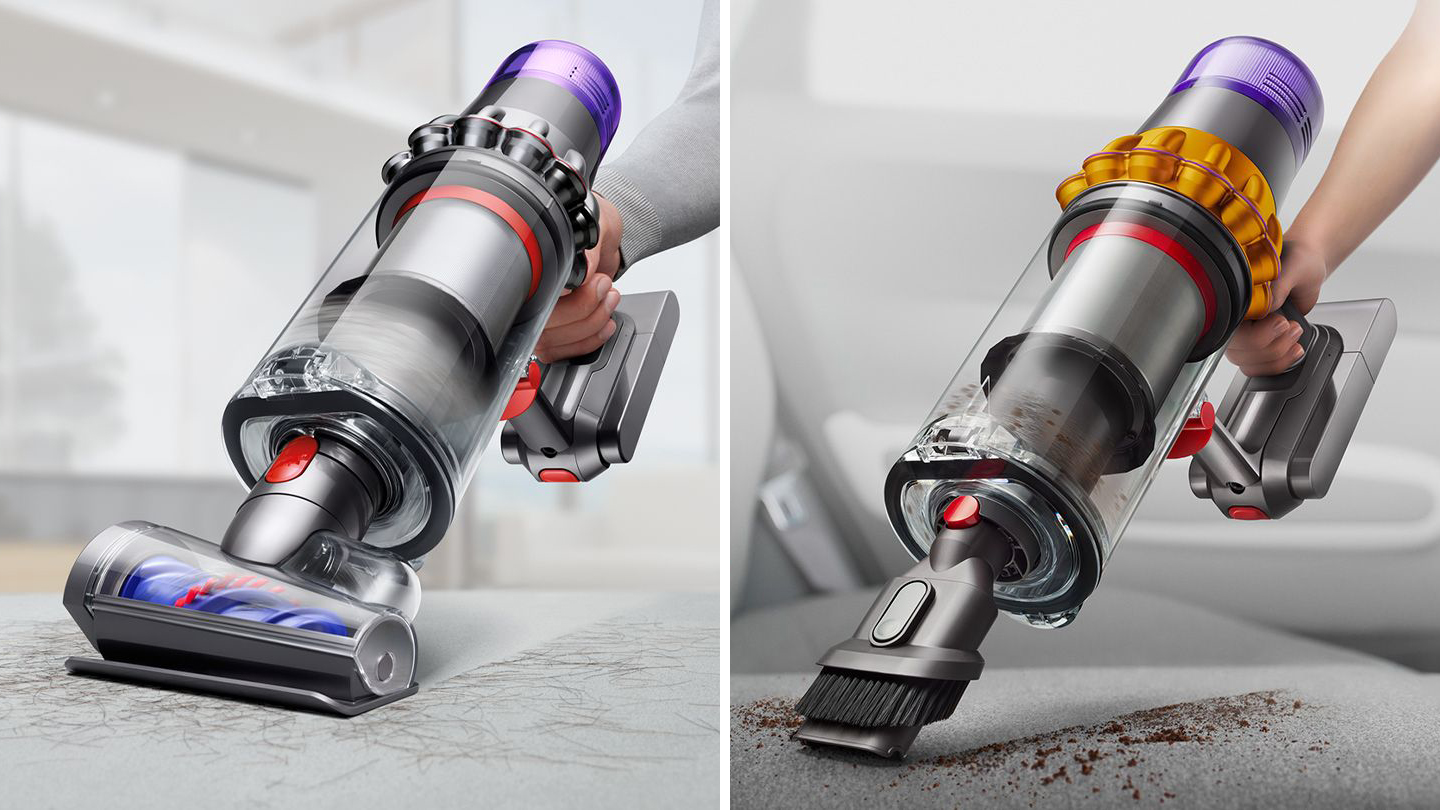
There are some differences though. For starters, there must be something different going on under the hood because even though both have a Hyperdymium motor that can spin at up to 125,000rpm, the V15 offers suction power of 240AW, whereas the V11 tops out at 186AW.
The V15 Detect's cyclones generate 100,000g of centrifugal force compared to the 79,000g created by the 14 cyclones in the V11. That's a slightly woolly stat that Dyson doesn't really advertise any more with its vacuums, but it basically means the V15 is better at trapping dust and dirt in the canister, rather than letting it creep into the vacuum itself, which would reduce suction power over time.
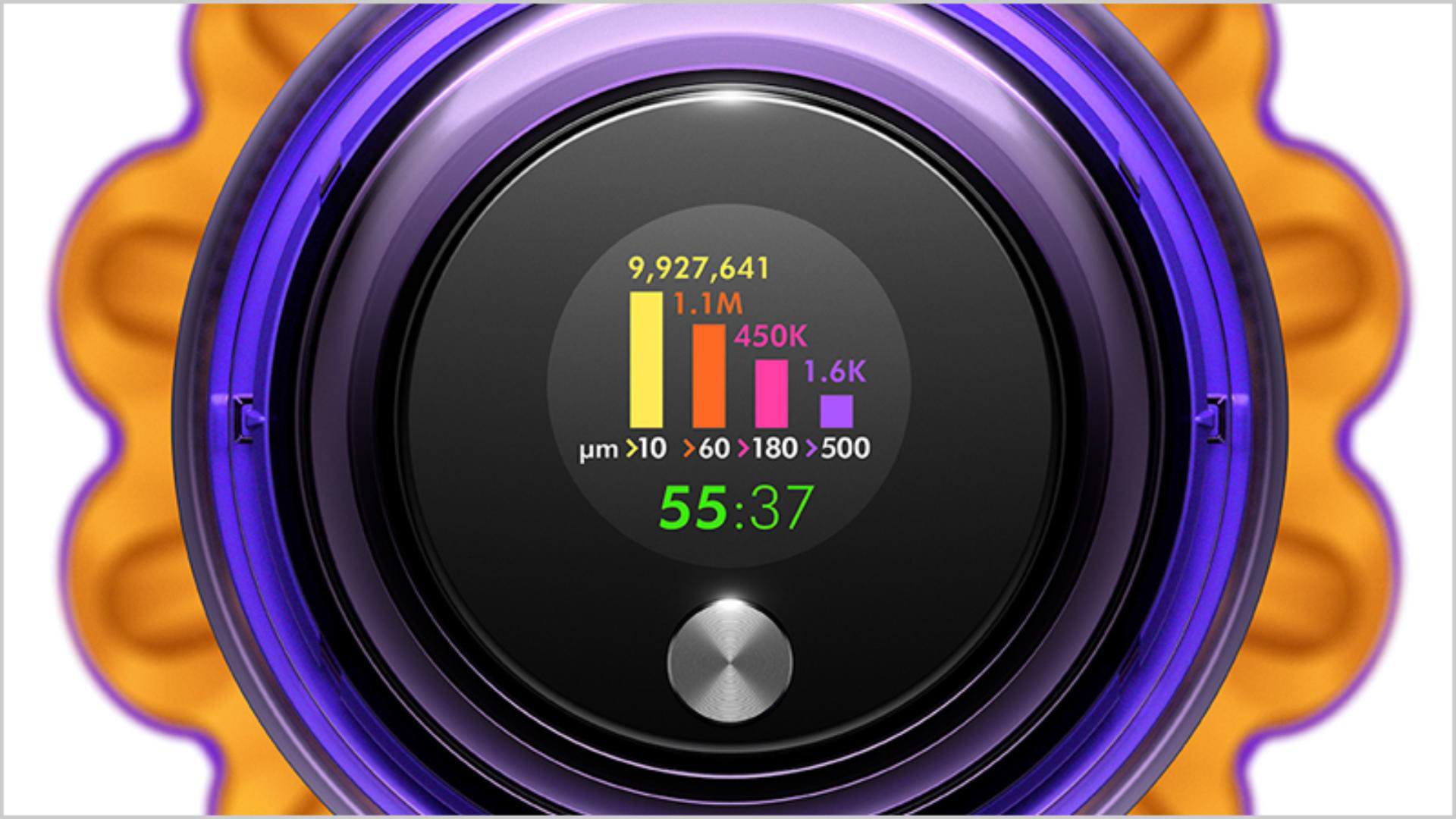
As suggested by the name, the newer model also has some added detection powers. Namely, it knows the size and volume of particles it's sucking up, and will provide that information in real time on the screen as you clean, and then a summary after you're done. This ability to sense dirt also means it can offer a more advanced Auto mode than the V11, but we'll get into that in the Performance section.
The main cleaner head is called the Motorbar head (previously High Torque head) on the V11 and the Digital Motorbar head on the V15. Both have vanes designed to direct hair straight into the bin rather than letting it stick around to clog the bar. The V15's main floorhead goes a step further by adding polycarbonate teeth that will also shred hair into pieces.

A second, fluffy floorhead specifically for hard floors is an option with the V11 (and appears on the reviewer photo above), but as redesigned version is included as standard with the V15. The V15's Fluffy Optic floorhead (previously called the Laser Slim Fluffy) is slimmer, and has a laser built in, to illuminate dirt that might otherwise be missed.
Both cordless vacuums can be used in stick mode, with a wand and cleaning head attached to the canister, or coveted into handheld mode and used with any of the extra tools they come with. We won't get too much into these, because they vary depending on which iteration of vacuum you pick. Fluffy floorhead aside, they are similar across both the V11 and V15.
- Winner: V15 – things like the improved cleaner heads help the V15 inch ahead of the V11 here, but there's not much in it
Dyson V11 vs V15 Detect: performance
On test, we found both the Dyson V11 and V15 Detect performed extremely well, having no issues sucking up spillages of different kinds, and tackling hair equally efficiently. Officially, the V15 is the more powerful of the two vacuums, offering a maximum of 240AW of suction, compared to 186AW for the V11. That's 24% more suction power. But in reality, either will work perfectly well for most people's needs.
Both models have three cleaning modes: Eco, Auto/Med and Boost. In Auto mode, with the Motorbar floorhead attached, both can sense whether they're on a carpet or hard floor, and increase or lower suction accordingly. The V15 goes a step further, and will also adjust power based on how much dirt there is on the floor.
We found this mode worked well on both vacuums; our testers could hear power amping up and down as they moved through their cleaning routine. It's a helpful feature that makes vacuuming low-effort, especially in the case of the V15.
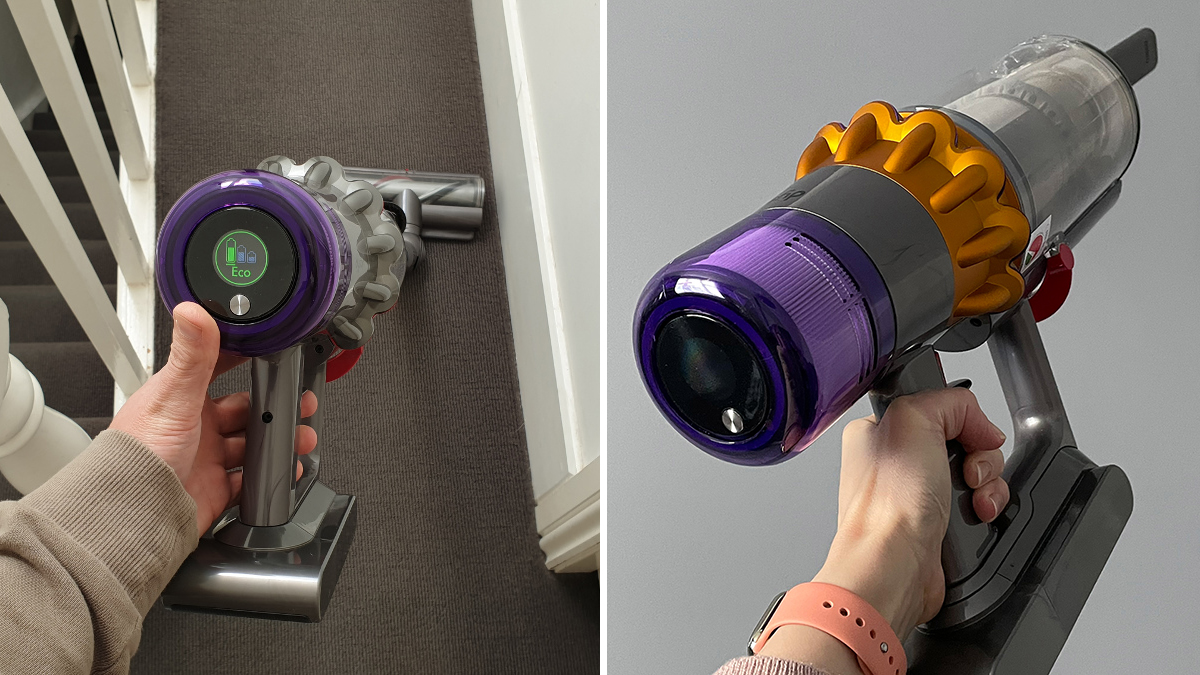
The runtimes of each vacuum are evenly matched, with both offering up to 60 minutes on the lowest, Eco power setting. During testing, the V15 Detect lasted a respectable 59 minutes without a powered head before needing to recharge, while the V11 lasted the full 60 minutes (again, with an unpowered head attached).
We'll skip over Auto mode, because battery life will depend on what kind of floor you're cleaning and, in the case of the V15, how dirty it is. In Boost, battery life is always significantly reduced – this is just for the most ingrained dirt. The V11 managed 12 minutes of cleaning time in Boost, compared to 18 minutes for the V15.
Because the battery is swappable on both, if you want to extend cleaning times you'll be able to purchase a spare that you can hot-swap in. Recharge times are between four and five hours for both models.
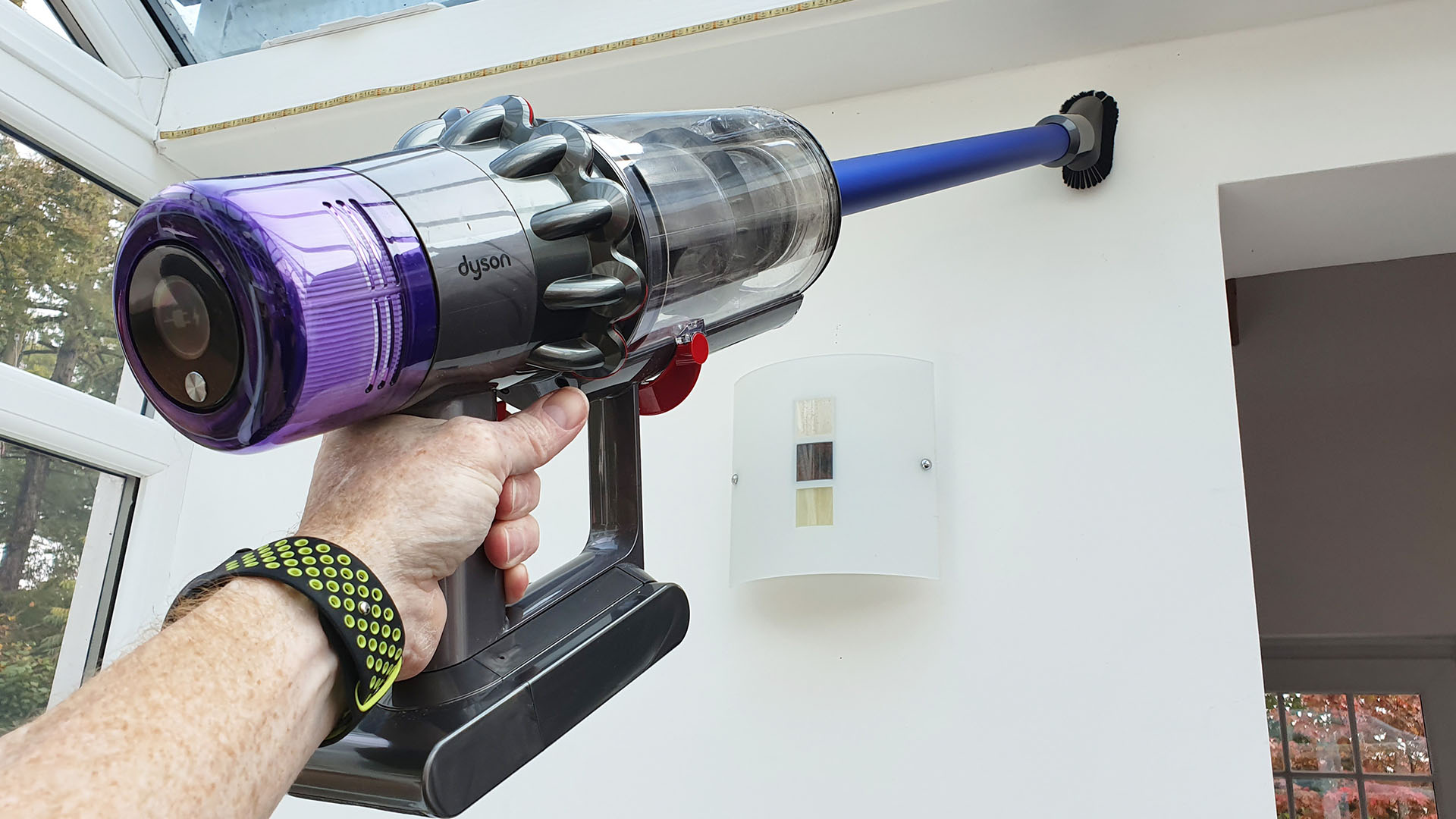
A common complaint we have with Dyson cordless vacs is that they tend to feel top-heavy, with most of the weight near the handle. As a result they can be a bit unwieldy to use in handheld mode in particular. We noted this issue with both the V11 and (very slightly heavier) V15 Detect. However, in the market in general and within Dyson's own wider range, both are fairly light – it's more of an issue on the newer Gen5detect, which feels noticeably heavy and awkward for a cordless stick vacuum.
Both the V11 and V15 are are operated by trigger – slightly frustratingly in the case of the V15, because the V12 Slim that launched alongside it swapped this for a one-press button, which has been the preferred option forward.
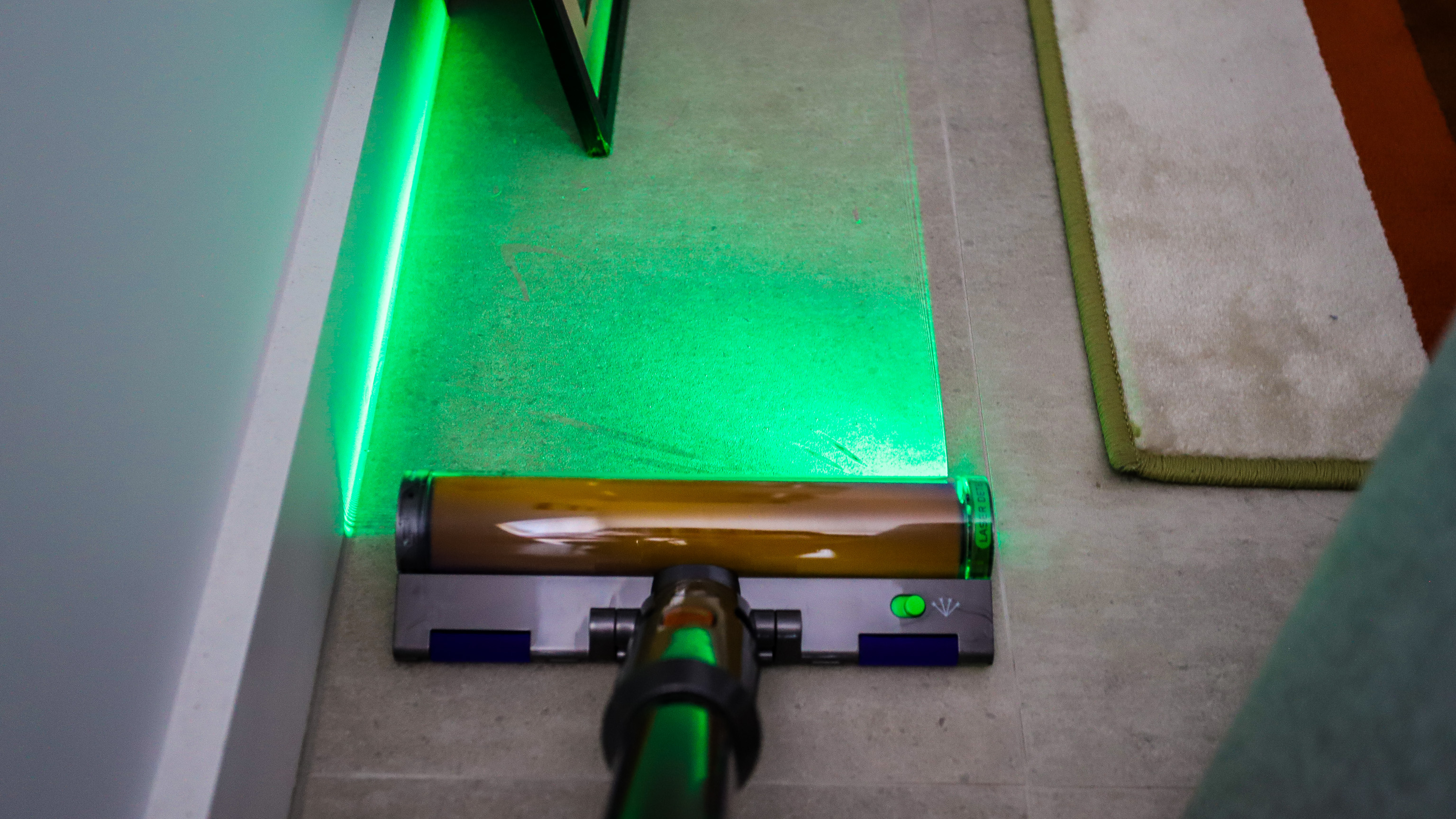
In terms of added features, our testers' opinions were mixed on the V15's new laser illumination. It's certainly a clever innovation, and the dirt-illumination does work, but one of our testers found they didn't end up using it often, opting instead to stick with the laser-less Motorbar head, which is the one that works with Auto mode. The laser was improved to be more visible with the Gen5detect, and we're far more sold on that iteration of this feature.
The real-time dirt reports are also limited in their practical usefulness. While it's quite interesting / reassuring to see evidence of what's being sucked up, it's not exactly essential information. Those particularly invested in making sure their floors are completely clean might appreciate having a way to know where dirt builds up in their home, and if a patch of floor is dust-free before moving on, though.
- Winner: V15 – a longer runtime in Boost mode, technically more powerful suction and some added features that will be useful to some give the newer model the edge here, although it's a marginal win